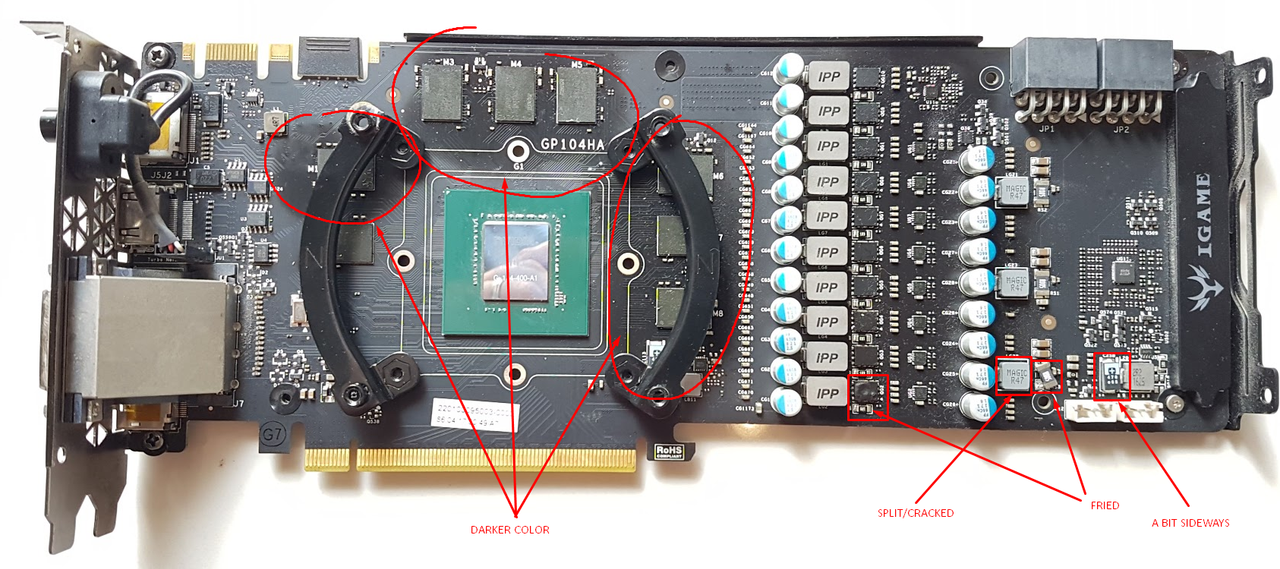Hi everyone,
This is a first to me, and not sure what to do.
I have a Colorful iGame GTX 1080 (yeah I know, I get what I can afford, now I pay the price). Late last year, I changed the stock cooler with a kraken G12 bracket and Thermaltake AIO. I did not put any heatsink on the components, because they are hard to get where I live and I read that they are not strictly necessary.
The card has been running fine and cool for several months now with no problem whatsoever.
Last night I was playing PUBG when the screen went black and I smelled burned plastic.
I took out the card, and this is what I can see:

original: https://s9.postimg.cc/8bzgjneof/Screenshot_16.png

original: https://s9.postimg.cc/68p1bgc5b/Screenshot_17.png

original: https://s9.postimg.cc/bwvc2co7j/Screenshot_18.png
In your experience, is this card salvageable? Can it be repaired?
Thank you in advance for your help.
This is a first to me, and not sure what to do.
I have a Colorful iGame GTX 1080 (yeah I know, I get what I can afford, now I pay the price). Late last year, I changed the stock cooler with a kraken G12 bracket and Thermaltake AIO. I did not put any heatsink on the components, because they are hard to get where I live and I read that they are not strictly necessary.
The card has been running fine and cool for several months now with no problem whatsoever.
Last night I was playing PUBG when the screen went black and I smelled burned plastic.
I took out the card, and this is what I can see:

original: https://s9.postimg.cc/8bzgjneof/Screenshot_16.png

original: https://s9.postimg.cc/68p1bgc5b/Screenshot_17.png

original: https://s9.postimg.cc/bwvc2co7j/Screenshot_18.png
In your experience, is this card salvageable? Can it be repaired?
Thank you in advance for your help.
Last edited:


